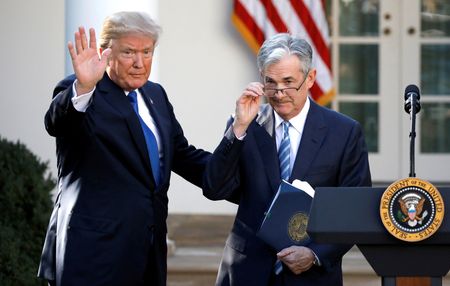By Suzanne McGee
(Reuters) – The birth of spot bitcoin exchange-traded funds (ETFs) and the quest for new ways to invest in the artificial intelligence overshadowed other trends in the broader ETF market in the first quarter, but analysts say other themes like single-country ETFs and bond ETFs are likely to play out through 2024.
Here are some of the trends identified by market participants and analysts for the ETF industry for the second quarter and beyond.
JAPAN
As the Nikkei 225 benchmark index notched its first record high since 1989, investors are flocking to single-country ETFs focused on Japan.
As of the final days of the first quarter, the group of ETFs saw $3.3 billion of inflows — more than half the $6.2 billion they attracted throughout 2023 as a whole, according to data from State Street Global Advisors.
Almost a third of that amount, $996 million, flowed into a single ETF, the WisdomTree Japan Hedged Equity Fund, according to data from VettaFi. That fund, which strips out currency risk, has been particularly appealing to both investors and traders as the yen has tumbled to a 34-year low.
MOVING PAST THE “MAGNIFICENT SEVEN”
State Street’s data shows that U.S.
stock market leadership appears to be broadening beyond megacap technology stocks. While technology-focused ETFs pulled in $9 billion in the first three months of the year, only $500 million of that came in March, said Matthew Bartolini, head of SPDR Americas Research at State Street.
By comparison, he said, “energy ETFs took in $1.2 billion; industrial funds another $1 billion, and real estate $2 billion.”
Investors also showed growing interest in value stocks in the first quarter, noted Brian Kraus, senior vice president for systematic ETFs at Hartford Funds.
He noted that the Russell 1000 Value Index gained 5.25% in March, while the Russell 1000 Growth climbed only 2.78%.
WATCHING THE FED; EYEING BOND ETFs
Actively managed bond ETFs continue to gather assets and expand in number and focus, even as the focus shifts to different slices of that universe as Federal Reserve policymakers come closer to cutting interest rates.
Drew Pettit, director of ETF strategy at Citigroup, flags the “risk on” rotation that has boosted corporate bond ETFs, in particular, and cautioned that “risk taking has become particularly aggressive” in this space.
NEW PLAYERS MAKING THEIR MARK
While the three largest players — BlackRock, Vanguard and State Street — continue to account for some 75% of the assets in the $8.2 trillion U.S.
ETF market, newer arrivals are growing more rapidly. The debut of the Fidelity Wise Origin Bitcoin Fund, which has $10 billion in assets, triggered a 16% surge in Fidelity’s overall ETF assets, according to TrackInsight, double that of Vanguard and triple the growth of State Street.
The market is also keeping a keen eye on Invesco, Capital Group, Dimensional Fund Advisors and even smaller players, like Janus Henderson.
NEW RISKS, NEW STRATEGIES
For now, said Citigroup’s Pettit, investors continue to focus more on getting exposure to the broad market than to emerging risks.
But he expects that will change as the coming months unfold and geopolitical anxieties and market volatility cause risk awareness to increase. “As more of those risks pop up,” he said, “we’ll start seeing investors turn to more specific, targeted ETFs,” such as sector funds.
(Reporting by Suzanne McGee; Editing by Leslie Adler)










